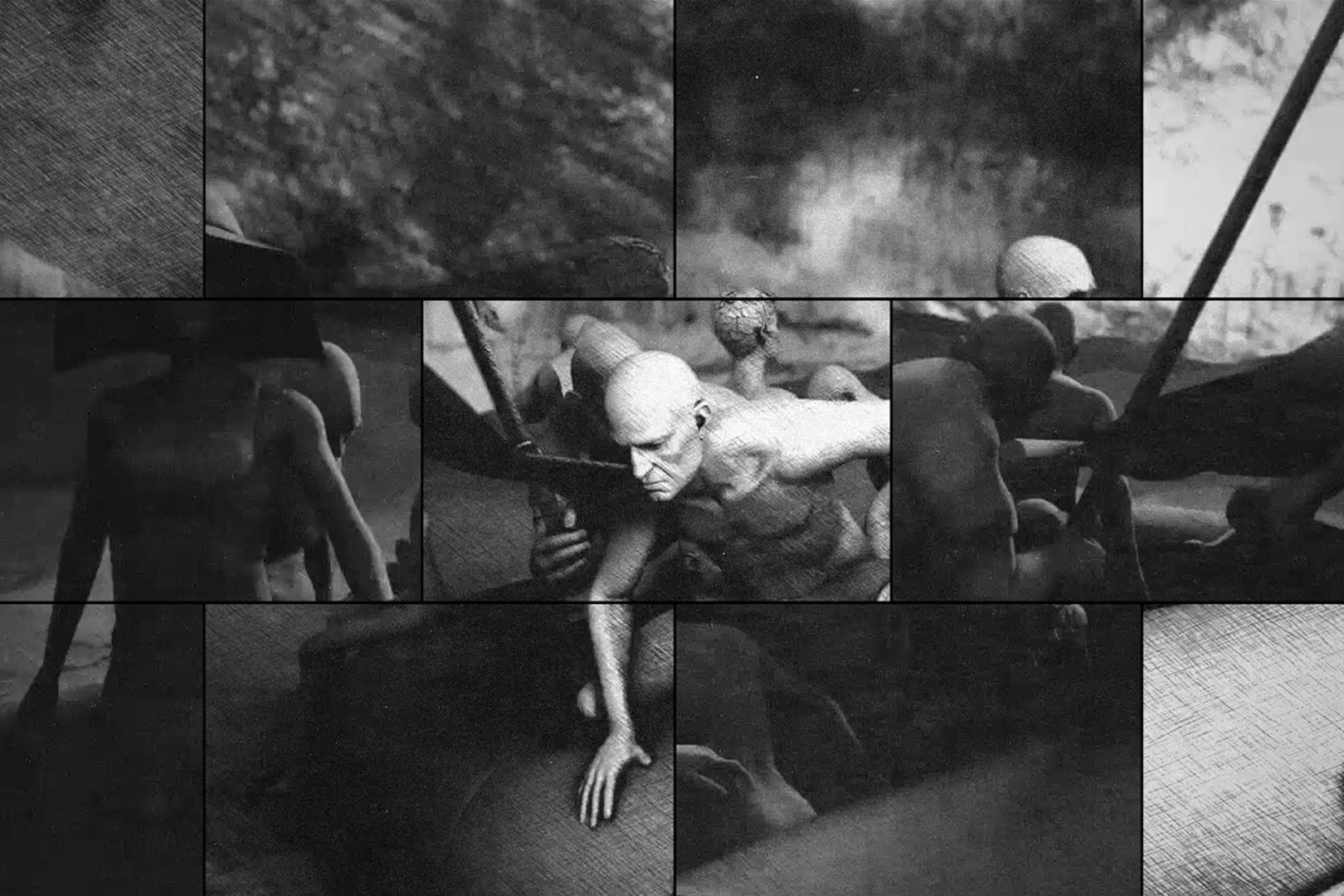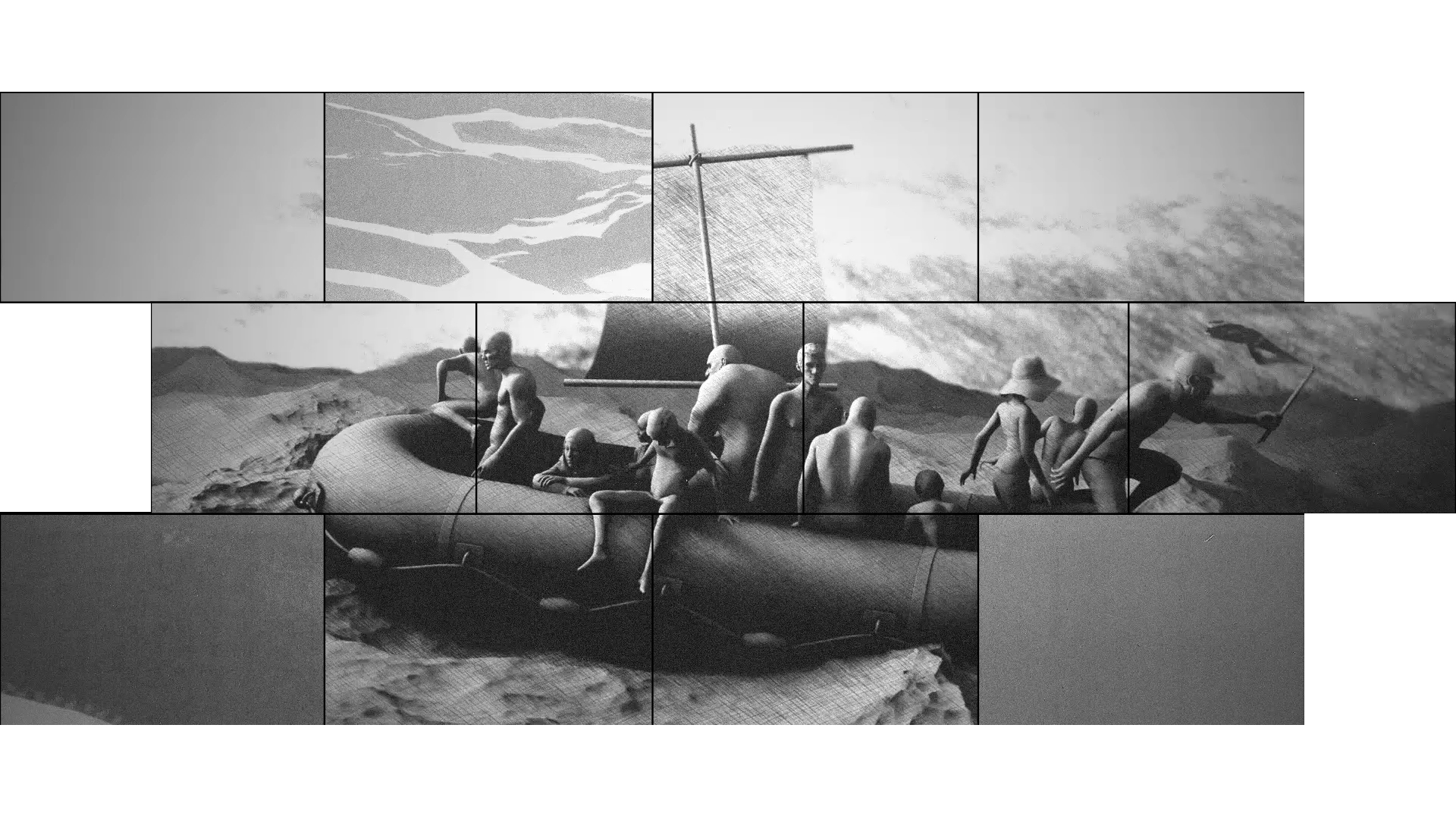Johannes DeYoung, Jack Vees: Point Nemo | Sea [Sic]
Artist(s):
Title:
- Point Nemo | Sea [Sic]
Exhibition:
Category:
Artist Statement:
Summary
Point Nemo | Sea [Sic] draws inspiration from Théodore Géricault’s painting, “The Raft of Medusa” (1818-19). Situated at a sublime intersect of sea and sky, this work represents a meditation on human desire — the poetics that drive human exploration and the urgencies that underly human migration.
Abstract
Point Nemo is the name of the Oceanic pole of inaccessibility. The nearest terrestrial human life is located approximately 1,000 miles away; often, the nearest humans are located in space, approximately 250 miles away, aboard the International Space Station.
The composition of this work draws inspiration from Théodore Géricault’s painting, “The Raft of Medusa” (1818-19). Situated at a sublime intersect of sea and sky, this work represents a meditation on human desire — the poetics that drive human exploration and the urgencies that underly human migration.
Technical Information:
Point Nemo | Sea [Sic] is designed for the SIGGRAPH Asia 2020 Open Projection Mapping program. The work was created using a combination of 3D/2D computer animation techniques, with custom shaders developed for Pixar Renderman in Autodesk Maya. Randomized algorithmic frame sequencing was achieved using a custom Processing script. This work is designed for projection mapping via the SIGGRAPH Asia 2020 custom projection mapping template.
Process Information:
The title of this work refers to a geographic point of inaccessibility. Point Nemo is the name of the Oceanic pole of isolation, a remote vector in the middle of the Pacific Ocean. Points of inaccessibility are known for their geographic remoteness, being points most distant from any continental land mass. In fact, the nearest humans to these points at any given time may be located in space, aboard the International Space Station. Oceanic exploration is an abiding interest in many of the works that Jack and I have created, whether collaboratively or individually. For instance, Jack and I previously collaborated on another project, The Raft, inspired by Thor Heyerdahl’s Kon Tiki expedition, which might have seeded some ideas for this project. To my mind, the exploration narrative is emblematic of greater social and psychological drivers. In this project, there’s a sense of foreboding and fragmentation that’s emotionally resonant in our current socio-political moment.
We began collaborating a few years ago, and the work we did on The Raft relating to Thor Heyerdahl’s research set a good pattern for us. There are many different modes of one artist interacting with another. For us, it is clear that not only do we appreciate each other’s work, but the collaborative process is one of mutual exploration. I think it is also a beneficial situation when each component allows the others to be what they will, and not have to function as inter-textual highlighter. Any facet can have clear points of reference, but when they all begin to do that in unison, I feel that it “boxes-in” the potentialities of any given artwork. I think it is coherent without being “stuck,” and at the same time able to fly without flying apart.
Other Information:
Inspiration Behind the Project
The visual composition of the work draws inspiration from Théodore Géricault’s 19th Century history painting, The Raft of the Medusa. Géricault’s depiction of the famously shipwrecked frigate slips the historical anchor of gruesome fact, in which 151 members of the shipwrecked crew were cast adrift off the coast of Senegal, succumbing to natural elements, resorting to cannibalism, and ultimately dwindling in number to 15 survivors upon eventual rescue. Instead, Géricault portrays a more emblematic and poetic representation of the scene, situated somewhere between icons of hope and despair. Its visage remains incredibly relevant today.






